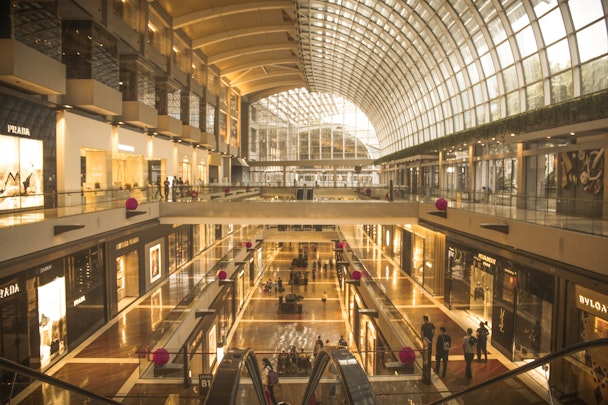The luxury experience: How high-end brands moved from things to feelings
EPAM Continuum’s Ken Gordon considers what happens to luxury when consumers seek to experience rather than possess.

EPAM Continuum on how luxury retailers are moving toward experience-thinking, online and IRL. / AR via Unsplash
Experiential luxury. Those two words have recently become welded together. “Think about life a decade or two ago: back then, status was derived by tangible things,” says my colleague Rochelle Wang, associate director of experience consulting at EPAM Continuum. “More and more, we see that today’s luxury is less about one’s material possessions and more about the stories one tells.”
In 1984, Hermès launched the Birkin Bag, and luxury consumers went shopping. In 2023, the brand’s fans are busy playing the Hermès game. It’s a different world. “Now, the things that you experience are the trigger, the stimulus for the present and future stories,” Wang says.
Another of my colleagues, Pietro Duchi, director of innovation consulting at EPAM Continuum, agrees. He says experiential luxury is “all about relationships,” specifically “the story beyond the product, the curation and the ability to weave a narrative around the product.”
Duchi talks about the product as “an anchor”, and that real value resides in the ability to remove the frictions and worries “that take up space in a customer's mind and then fill that space with real value,” elements that “can inspire the curiosity” and “make them feel alive.”
It’s about creating what Duchi calls “the right feeling in the right place at the right time with the right product.” The experience of luxury might be about getting to an experience early. Or wearing something that nobody else has seen. Getting to know the designer personally.
A key part of that access is about providing it in the proper environment; it’s not always digital and it’s not always in-store. Luxury brands must constantly ask: “What is the feeling we can create for the customer?” But also: “Which channel is most appropriate to deliver that feeling?”
Advertisement
Who gives good experience?
Loewe, the Spanish luxury fashion house, for one. “They play a lot with the materials and craftsmanship,” says Duchi, adding that one needs to be in the right place and time to play along. By doing this, the brand positioned itself as a “champion of good design,” Duchi says.
Going beyond good design is the Jacquemus, with its 24-hour deluxe vending machine experience. A luxury vending machine? “A beautiful monochrome vending machine in a medieval courtyard or on the streets of Paris where you could buy a $1,000 bag with your credit card,” says Duchi. Lucky patrons could experience an opportunity to be part of a wildly unique handbag-shopping experience.
Duchi says that, while splashy marketing efforts can be interesting and attractive, one-shot deals can be a problem. Curated experiences don’t necessarily translate into a good experience in-store. Conversely, a brand’s in-store installation might be transcendental, but its online experience terrible. Such inconsistency is an issue.
“Digital is still so behind when it comes to luxury,” Duchi says.
Advertisement
To thine own brand be true
Experiential luxury aims to have its own profoundly individual fingerprint. “If an experience is duplicable by another brand, then it can be commoditized quite easily,” says Wang.
Wang invites us to consider Noma, the famed restaurant in Copenhagen. Chef and co-owner René Redzepi has famously said he doesn’t see himself operating in the restaurant business. “He says that Noma is in the hospitality business – so even though they perform as a three-Michelin-star restaurant year after year, whenever a guest walks in the door, everybody in the kitchen has to stop what they’re doing and walk towards the door… even if something is burning!”
It’s not just about the food the restaurant is cooking but also the feeling that you need to leave with diners.
Then there’s Equinox and its premium gym experience. “Equinox didn’t design this experience as a gym; instead, it’s a place where high-net-worth individuals can work out and network,” says Wang. Equinox looks at the experience and asks: How can we create opportunities for premium Equinox members to mingle? Wang adds: “Equinox is a gym on paper, but in their experiential luxury role, they are playing the role of, say, LinkedIn, but in physical space for a high-net-worth crowd?”
Suggested newsletters for you
Are you doing enough?
In experiential luxury, once is not enough. The magic must be unbroken. Brands must work to maintain experiential excellence at every touchpoint.
To keep the experiential luxury flowing, Duchi suggests that brands ask questions like: “Am I doing enough once these customers are in my world? Am I doing enough in terms of experience to keep them in and not break the magic?”
Content by The Drum Network member:

EPAM Continuum
Our diverse, integrated consulting teams apply a Systems Thinking mindset to get to the heart of our clients’ increasingly complex business challenges.
Our...

